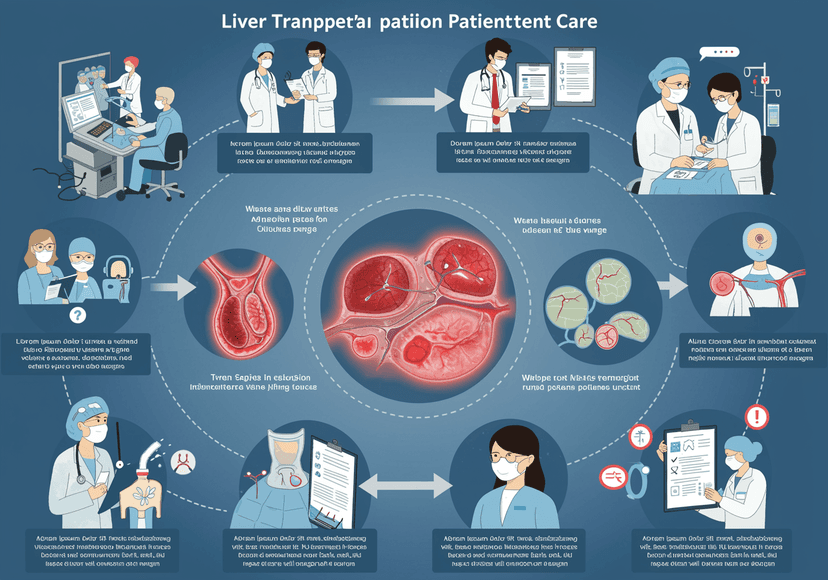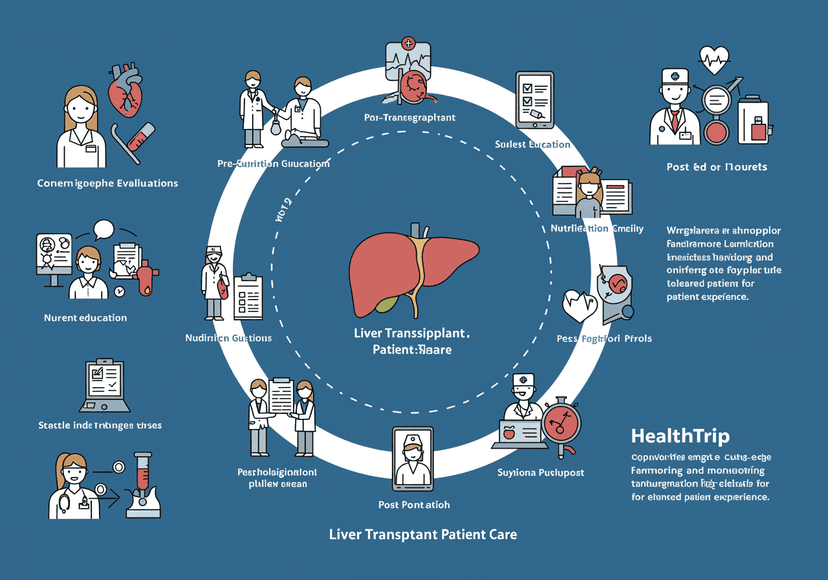
DBS for Parkinson's: Neurosurgical Breakthrough Unveiled
14 Oct, 2023
 Healthtrip Team
Healthtrip TeamDeep Brain Stimulation (DBS) is a neurosurgical procedure involving the implantation of electrodes into specific regions of the brain, connected to a pulse generator placed under the skin near the collarbone. This treatment modulates abnormal neural activity and has been increasingly recognized for its effectiveness in alleviating symptoms associated with neurological disorders, particularly Parkinson's disease.
The significance of the neurosurgical breakthrough in DBS for Parkinson's lies in its potential to revolutionize the management of this progressive neurodegenerative disorder. By precisely targeting and stimulating certain brain regions, DBS has shown promise in significantly ameliorating motor symptoms, such as tremors, rigidity, and bradykinesia, thereby enhancing the overall quality of life for Parkinson's patients.
Most popular procedures in India
This breakthrough represents a pivotal advancement in neurosurgery, offering new hope for improved therapeutic outcomes and fostering a deeper understanding of the intricate neural mechanisms involved in Parkinson's disease.
Wellness Treatments
Give yourself the time to relax
Lowest Prices Guaranteed!

Lowest Prices Guaranteed!
Breakthrough:
The neurosurgical breakthrough in Deep Brain Stimulation (DBS) for Parkinson's disease involves refined targeting and precision in electrode placement within the brain. This breakthrough enhances the specificity and efficacy of the stimulation, allowing for more tailored treatment. Unlike traditional approaches, this advancement leverages cutting-edge neuroimaging techniques, such as advanced MRI and real-time monitoring during surgery, to precisely identify and stimulate key neural structures associated with Parkinson's symptoms.
B. Key Innovations or Advancements:
- Precision Targeting: The breakthrough involves advancements in neuroimaging technology, enabling surgeons to pinpoint and target specific neural circuits with unprecedented accuracy. This precision minimizes the risk of unintended side effects and maximizes the therapeutic impact of DBS.
- Adaptive Stimulation: Innovations in electrode design and programming algorithms allow for adaptive stimulation, where the device can dynamically adjust the stimulation parameters based on real-time feedback from the patient's neural activity. This personalized approach optimizes therapeutic benefits and minimizes adverse effects.
- Miniaturization of Devices: The development of smaller and more sophisticated implantable devices reduces the invasiveness of the procedure and enhances patient comfort. Miniaturization also allows for more discreet placement of the pulse generator, promoting a better quality of life for individuals undergoing DBS.
C. How the Breakthrough Addresses Challenges in Parkinson's Treatment:
- Improved Symptom Control: The refined targeting and adaptive stimulation contribute to better control of Parkinson's symptoms. Patients experience more precise and effective relief from motor symptoms like tremors, stiffness, and slowness of movement, leading to an enhanced overall treatment outcome.
- Reduced Side Effects: The breakthrough addresses the challenge of side effects often associated with traditional DBS by minimizing stimulation in non-target areas. This reduction in unintended effects enhances the safety profile of the procedure, making it a more viable and attractive option for a broader range of patients.
- Individualized Treatment Plans: With the ability to tailor the stimulation parameters to individual patient needs, the breakthrough allows for more personalized treatment plans. This individualization is crucial in addressing the heterogeneity of Parkinson's symptoms, ensuring that each patient receives a customized and optimized therapeutic approach.
Benefits of DBS for Parkinson's
- Improved Symptom Management:
- Reduction in tremors, rigidity, and bradykinesia.
- Enhanced control over motor fluctuations, providing more stable and predictable symptom relief.
- Better management of dyskinesias, allowing for smoother movement.
- Enhanced Quality of Life for Patients:
- Increased mobility and independence in daily activities.
- Improvement in mood and cognitive functions.
- Enhanced social interactions and participation in recreational activities.
- Potential Reduction in Medication Dependence:
- Diminished reliance on high doses of anti-Parkinsonian medications.
- Lower risk of medication-related side effects.
- Improved medication responsiveness due to optimized DBS settings.
Deep Brain Stimulation Procedure:
- Pre-operative Evaluation:
- Comprehensive neurological and psychological assessments.
- Brain imaging (MRI, CT) for precise target localization.
- Evaluation of medication response and disease severity.
- Surgical Implantation:
- Patient under general anesthesia.
- Frame-based or frameless stereotactic techniques for precise electrode placement.
- Real-time intraoperative imaging for accurate targeting.
- Implantation of electrodes into specific brain regions, typically the subthalamic nucleus (STN) or globus pallidus interna (GPi).
- Connection to Pulse Generator:
- Subcutaneous implantation of a pulse generator (similar to a pacemaker) in the chest or abdomen.
- Connection of electrodes to the pulse generator via subcutaneous extension wires.
- Programming and Adjustment:
- Post-operative programming sessions to optimize stimulation parameters.
- Iterative adjustments based on patient response and symptom control.
- Fine-tuning to achieve maximal therapeutic benefits with minimal side effects.
B. Mechanism of Action in Treating Parkinson's Symptoms:
- Modulation of Neural Activity:
- Electrical stimulation alters the activity of targeted brain regions.
- Normalization of aberrant neural circuitry associated with Parkinson's.
- Neurotransmitter Release:
- Stimulation promotes the release of neurotransmitters, such as dopamine.
- Compensates for the deficient neurotransmitter levels characteristic of Parkinson's.
- Network Effects:
- DBS influences broader neural networks involved in motor control and symptom regulation.
- Indirect effects on interconnected brain regions contribute to overall symptom improvement.
- Adjustable Stimulation:
- Ability to tailor stimulation parameters allows for individualized treatment.
- Adaptive programming responds to the patient's changing symptomatology over time.
C. Patient Eligibility and Criteria for Undergoing DBS:
- Motor Symptoms:
- Presence of significant motor symptoms not adequately controlled by medication.
- Documented responsiveness to levodopa but experiencing fluctuations or dyskinesias.
- Disease Duration and Progression:
- Typically considered for individuals in the mid to advanced stages of Parkinson's.
- Disease duration and progression are factors in assessing candidacy.
- Cognitive and Psychological Status:
- Evaluation of cognitive function and psychological status to ensure suitability.
- A balance between managing motor symptoms and avoiding cognitive or psychiatric complications.
- Medication Responsiveness:
- Demonstrated positive response to anti-Parkinsonian medications.
- DBS is often considered when medication adjustments alone are insufficient.
- General Health Considerations:
- Overall good general health for surgery.
- Absence of medical conditions that could pose risks during the procedure.
In summary, Deep Brain Stimulation (DBS) offers a precise and effective solution for managing Parkinson's symptoms, enhancing patients' quality of life. Its innovative mechanisms, targeting specific neural circuits, bring about notable improvements in motor function. The procedure's ability to potentially reduce medication dependence marks a significant advancement in Parkinson's treatment. As DBS continues to evolve, it stands as a transformative breakthrough with promising implications for neurosurgery and patient care.
Related Blogs

Comprehensive Liver Transplant Patient Care at Healthtrip
Learn how Healthtrip provides comprehensive and compassionate patient care throughout

Comprehensive Liver Transplant Patient Care at Healthtrip
Learn how Healthtrip provides comprehensive and compassionate patient care throughout

Elevate Your Health and Wellness with Enhance by Mediclinic
Discover how our team of experts can help you achieve

Discover Serenity at Corniche Hospital: Your Path to Wellness
Experience world-class healthcare services at Corniche Hospital, where compassion meets

Revolutionizing Medical Care with Compassion and Expertise
Experience world-class medical treatment and compassionate care at Yashoda Hospitals

Exploring the Future of Healthcare in Hyderabad
Discover the latest advancements in medical technology and patient care










